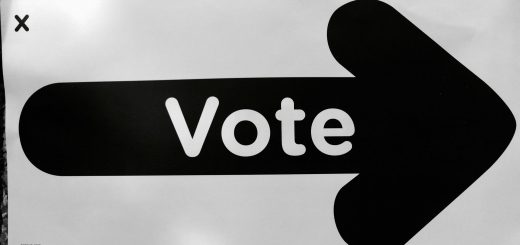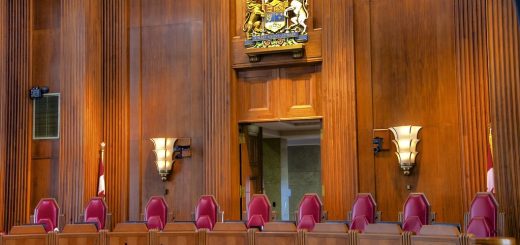British Columbia v Council of Canadians with Disabilities: Deciding Public Interest Standing

In British Columbia (Attorney General) v Council of Canadians with Disabilities, 2022 SCC 27 [Council of Canadians SCC], the Supreme Court of Canada (“SCC”) clarified how courts should apply the legal test for deciding whether to grant or deny public interest standing. Public interest standing is “an aspect of the law of standing” that “allows individuals or organizations to bring cases of public interest before the courts even though they are not directly involved in the matter and even though their own rights are not infringed” (Council of Canadians SCC, para 2). It is an important legal avenue which enables individuals or organizations to act on behalf of those who face significant barriers in pursuing litigation and allows courts to “promote access to justice and simultaneously ensure that judicial resources are put to good use” (Council of Canadians SCC, para 2). After exploring the facts and background, the procedural history, and the SCC’s decision, this case comment will explore and analyze the SCC’s resolution of the key issues in the case and the guidance that the SCC offered for applying the test for determining public interest standing.
Facts and Background
In Council of Canadians SCC, the party seeking public interest standing was the Council of Canadians with Disabilities (“CCD”), a national not-for-profit organization that “promotes the equality, autonomy, and rights of people living with physical and mental disabilities in Canada” (Council of Canadians SCC, para 7). On September 12, 2016, the CCD and two individual plaintiffs filed a notice of civil claim challenging the constitutionality of provisions in British Columbia’s mental health legislation which allowed physicians to administer psychiatric treatment to patients with mental disabilities without consent under certain circumstances, alleging that they violated sections 7 and 15(1) of the Canadian Charter of Rights and Freedoms (Council of Canadians SCC, para 8). However, on October 25, 2017, the two individual plaintiffs withdrew from the litigation, and the CCD filed an amended notice of civil claim shortly after, pleading that it should be granted public interest standing (Council of Canadians SCC, para 10). The Attorney General of British Columbia (“AGBC”) subsequently filed an amended response alleging the CCD failed to meet the test for public interest standing and could not proceed on its Charter claims without an individual plaintiff. The AGBC also filed a notice of application seeking a dismissal of the CCD’s action, claiming that the CCD lacked standing to continue the action (Council of Canadians SCC, para 11).
Procedural History
At the Supreme Court of British Columbia (“BCSC”) (MacLaren v British Columbia (Attorney General), 2018 BCSC 1753), Chief Justice Hinkson applied the three-part test for granting public interest standing set out in Canada (Attorney General) v Downtown Eastside Sex Workers United Against Violence Society, 2012 SCC 45 [Downtown Eastside] (Council of Canadians SCC, para 16). In Downtown Eastside, the SCC stated:
In exercising their discretion with respect to standing, … courts consider whether the case raises a serious justiciable issue, whether the party bringing the action has a real stake or a genuine interest in its outcome and whether, having regard to a number of factors, the proposed suit is a reasonable and effective means to bring the case to court (Downtown Eastside, para 2).
After “cumulatively weighing” the three criteria, Chief Justice Hinkson granted the AGBC’s summary trial application, dismissed the CCD’s claim, and denied public interest standing to the CCD (Council of Canadians SCC, paras 16 and 20).
The CCD appealed Chief Justice Hinkson’s decision to the Court of Appeal for British Columbia (“BCCA”) (Council of Canadians with Disabilities v British Columbia (Attorney General), 2020 BCCA 241 [Council of Canadians BCCA]). In its analysis, the BCCA highlighted two principles that guide courts in applying the Downtown Eastside test: the legality principle and access to justice. The legality principle captures the idea that “state action must conform to the Constitution and statutory authority and that there must be a practical and effective means to challenge the legality of state action in the courts” (Council of Canadians BCCA, para 73). Access to justice, in the context of this case, refers to “the practical realities of providing access to justice for vulnerable and marginalized citizens broadly affected by legislation of questionable constitutional validity” (Council of Canadians BCCA, para 71). The Court of Appeal held that these two principles were “key components” that “merit particular weight” when deciding whether to grant or deny public interest standing (Council of Canadians BCCA, para 79).
The BCCA then applied the first prong of the Downtown Eastside test, considering whether the CCD raised a serious justiciable issue. It held that Chief Justice Hickson erred in requiring “a particular factual context of an individual case” under this prong and that the CCD could establish its claim by “adducing evidence from directly-affected non-plaintiff and expert witnesses” (Council of Canadians BCCA, paras 113-114). After identifying this error, the BCCA concluded that the BCSC was “best placed to assess the CCD’s standing application … based on a revised record” (Council of Canadians BCCA, para 123) and therefore did not apply the remaining two steps of the Downtown Eastside test. The AGBC appealed the BCCA’s decision to the SCC.
The SCC’s Decision
Writing for a unanimous court, Chief Justice Wagner identified three issues raised by the AGBC’s appeal:
1. What role do the principles of access to justice and of legality play in the test for public interest standing, and do they merit “particular weight” in the balancing exercise a judge must undertake to grant public interest standing?
2. Without an individual co-plaintiff, how can a litigant seeking public interest standing show that its claim will be presented in a “sufficiently concrete and well-developed factual setting”? If revisiting the issue of standing at a later stage of a proceeding is necessary to ensure this setting is present, under what conditions should parties be permitted to do so?
3. Applying these principles, should CCD be granted public interest standing? (Council of Canadians SCC, para 27)
Issue 1: Situating the Principles of Legality and Access to Justice in the Test for Public Interest Standing
To situate the principles of legality and access to justice, the SCC noted that when making decisions on public interest standing, courts should aim to “strike a meaningful balance between the purposes that favour granting standing and those that favour limiting it” (Council of Canadians SCC, para 30). As such, courts should not attach “particular weight” to any one principle, including the legality principle and access to justice (Council of Canadians SCC, para 31). In addition, because those two principles are featured most prominently in the third prong of the Downtown Eastside test, designating extra weight on those principles would “transform the reasonable and effective means factor into a determinative one,” an outcome that the SCC warned against in Downtown Eastside (Council of Canadians SCC, para 58).
Issue 2: Ensuring a Sufficient Factual Setting
In his appeal, the AGBC argued that while public interest litigation could proceed in some cases with a directly affected plaintiff, evidence from a directly affected plaintiff was necessary in cases where the impact of legislation was at issue to ensure a sufficient factual setting (Council of Canadians SCC, paras 63-64). The SCC rejected this argument, holding that public interest litigants, such as the CCD, could establish sufficient factual settings by calling appropriate non-plaintiff witnesses (Council of Canadians SCC, para 66). The SCC also noted that courts have the ability to reconsider standing at a later stage of the litigation process, even if standing has already been granted (Council of Canadians SCC, para 74). Both determining whether a party will provide a sufficient factual setting at trial and whether to invoke the ability to revisit standing depends highly on the circumstances of the case (Council of Canadians SCC, paras 71 and 76).
Issue 3: Application to the Facts
After clarifying the applicable law, the SCC granted the CCD’s request to leave to cross-appeal the BCCA’s order and applied the Downtown Eastside test to the facts of the case (Council of Canadians SCC, para 78). Under the test’s first prong, the SCC determined that the CCD presented a serious justiciable issue as its pleadings alleged “facts which, if proven, could support a constitutional claim” (Council of Canadians SCC, para 100). The SCC then applied the second prong of the test and concluded that the CCD has a genuine interest in the issues based on the organization’s history, background, and work (Council of Canadians SCC, para 101). Under the third and final prong, the SCC decided that the CCD’s proposed suit was a reasonable and effective means to bring the case to court after observing the public interest nature of the case, the CCD’s ample resources and expertise, and the significant barriers that individuals suffering from mental disabilities face in pursuing similar claims at court (Council of Canadians SCC, paras 105, 110, and 115). After weighing the three Downtown Eastside factors cumulatively, the SCC exercised its discretion in favour of granting the CCD public interest standing while flagging that the AGBC could apply to have the issue of standing reconsidered if the CCD failed to provide the promised sufficient factual setting (Council of Canadians SCC, para 118).
Analysis of the SCC’s Decision
A key dispute in the case was whether the CCD could adduce a “sufficiently concrete and well-developed factual setting” for its claim without evidence from a directly affected individual plaintiff (Council of Canadians SCC, para 61). In my opinion, the SCC correctly decided that the involvement of a directly affected plaintiff should not be a strict requirement. There are effective alternative options, such as evidence from affected non-plaintiff witnesses and relevant experts, that public interest litigants can rely on to provide the necessary factual setting when pursuing a public interest claim. If the SCC affirmed the rigid requirements that the AGBC argued for, it would have placed an unreasonable burden on public interest litigants when “constitutional litigation is already fraught with formidable obstacles for litigants” (Council of Canadians SCC, para 67). In addition, denying standing is a “blunt instrument” that courts should only use after exploring other litigation management tools that could be used to ensure a sufficient factual setting (Council of Canadians SCC, para 109). In this case, the SCC did just that by pointing out that the AGBC could reopen the sufficient factual setting issue later in the litigation process if circumstances changed. The term “blunt instrument” is apt for describing the courts’ discretion to deny standing; courts should wield their power carefully so that they do not deny standing to parties who could have legitimate and important claims.
At the same time, the SCC was also determined to ensure that the Downtown Eastside test remained a balanced and fair framework for courts to apply, refusing to give precedence to any factors or principles, such as the principles of legality or access to justice. The SCC had the right goal in mind, as determining whether to grant standing is a highly contextual question. Courts should apply all of the factors and principles of the Downtown Eastside test as equally as possible so that they can reveal the context of the case without any bias. That way, the unique context of each case informs the courts’ analysis and ultimate decisions, not any pre-designated legal principle. If we follow the BCCA’s approach and grant extra weight to the principles of legality and access to justice, this may result in an unbalanced analysis. For example, courts may tend to equate those two principles to “a license to grant standing to whoever decides to set themselves up as the representative of the poor or marginalized” under the BCCA’s approach (Downtown Eastside, para 51). A balanced approach that weighs all the factors and principles equally and allows the context to lead the analysis aligns with the “flexible and purposive approach mandated in Downtown Eastside” and will ensure fair consideration of the issues for all parties (Council of Canadians SCC, para 23).
In line with the SCC’s balanced and fair approach to applying the Downtown Eastside test, the SCC also took a strict and dry approach when reading and interpreting the prongs of the test. What mattered to the SCC was whether “there [was] a serious justifiable issue, whether the plaintiff [had] a genuine interest, and whether the suit [was] a reasonable and effective means of litigating the issue” (Council of Canadians SCC, para 90). As long as the CCD could fulfill those listed criteria, it could advance its claim. The SCC appropriately stripped away any additional requirements not found in Downtown Eastside that Chief Justice Dickson placed on the CCD, such as the requirement to represent every single affected person’s interests and his undue weight on requiring an individual plaintiff. Going forward, courts can rely on this decision to apply the Downtown Eastside test in a balanced manner and make fair, context-based decisions on whether to grant or deny public interest standing.







Join the conversation